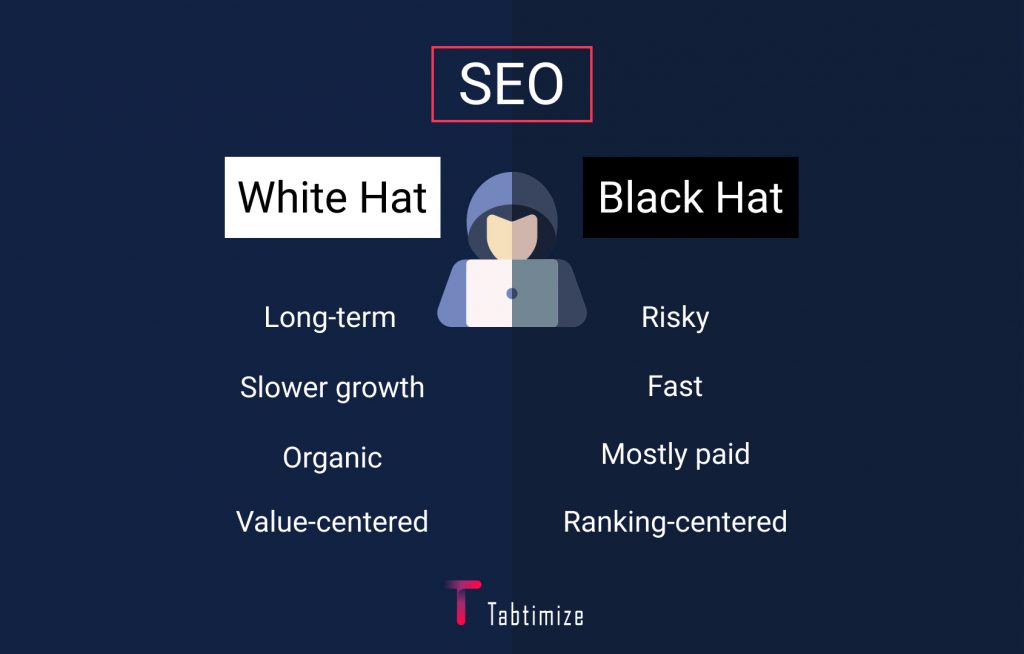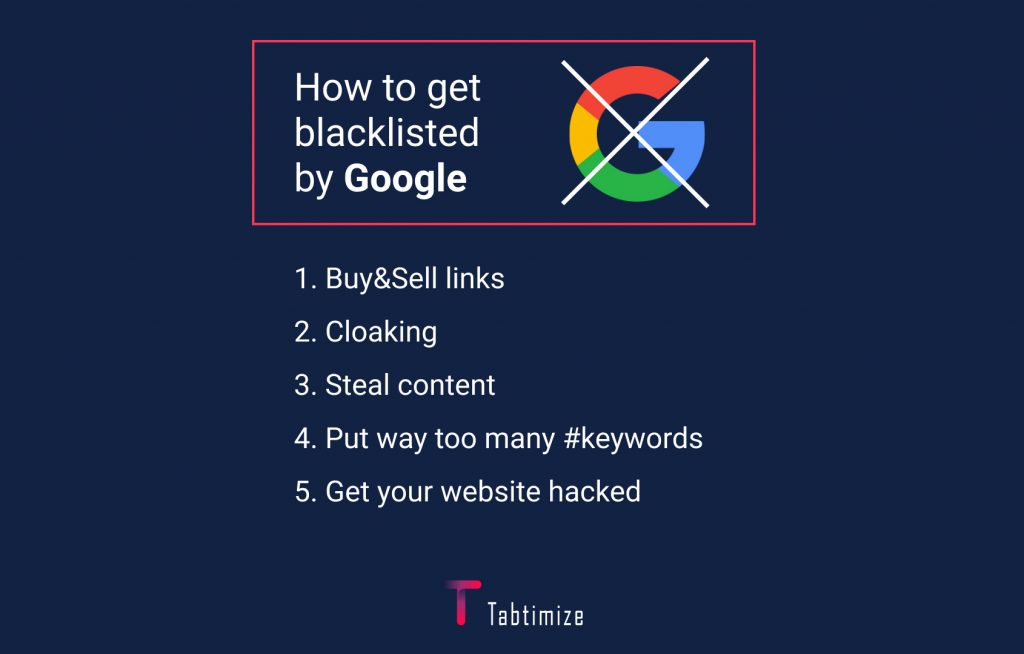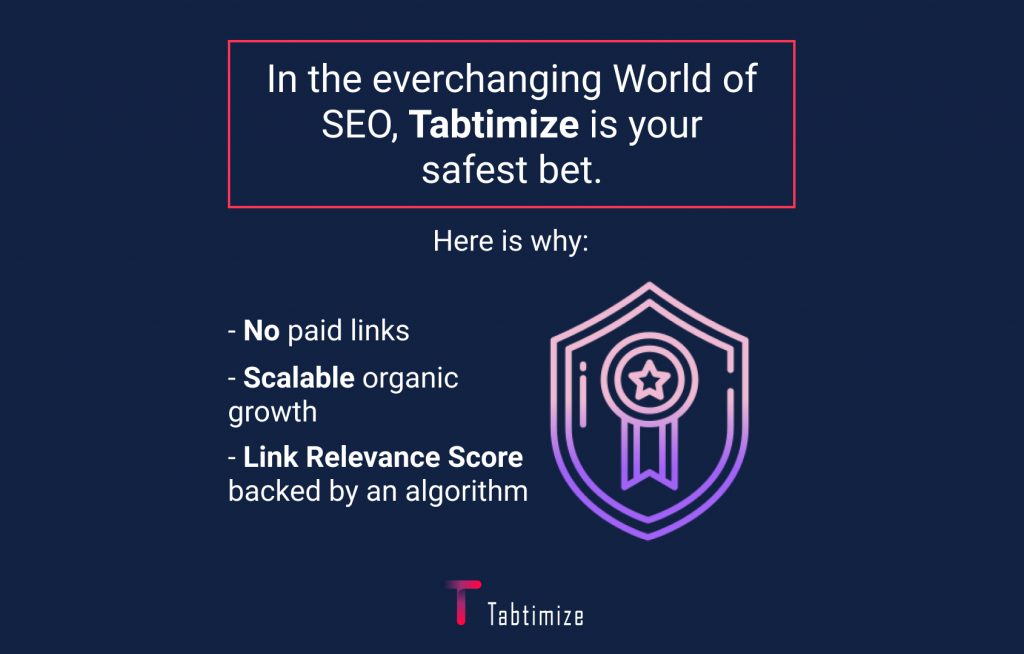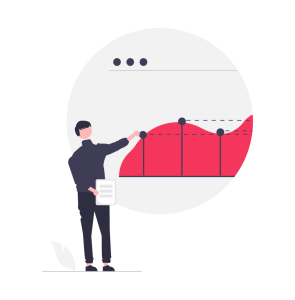So you’ve heard that Google recently rolled out another core algorithm update. If you got hit by it, you’re probably not jumping for joy. No one wants to log into their analytics dashboard and see that dreaded downturn in traffic.
There’s always inexplicable anxiety that is associated with core updates. Historically, whenever a new update is released, most marketers complain of tanking page traffic or an uptick in penalties, etc. amongst other undesired outcomes.
All I need for 2020 to get worse is for Google to tank my sites…. If they do I am going to just get a job a the local supermarket and be done with SEO haha
— Mike Payton (@Payt) December 3, 2020
This tweet pretty much sums up the sentiments of the SEO community. But, a new update can also mean another chance for SEOs to get rewarded for following the rules and adhering to Google-approved, White-hat SEO.
Large, annual core updates such as the most recent one guarantee that a noticeable impact will be felt across search results worldwide and in all languages. With every new core-update, Google reassesses how content should be ranked (based on its value to users) that reflects the changes made to the site.
Marketers working meticulously to boost their SEO efforts may see their rankings or page traffic take a nose-dive. The opposite can also be true. Volatility in traffic and rankings are given whenever a new rollout launches and will indicate how relevant the content on a particular website is. In short, the more relevant your content is post-update, the rankings will be positively affected.
Google’s main purpose is to make sure they are providing the most useful content to users. As long as you’re making sure that your content is relevant, valuable, and following their guidelines—you’ll avoid harsh penalties and prevent your rankings from plummeting.
It’s important to note that getting devalued by google post-update and facing a penalty from Google are two different things. Devaluation and penalties can both occur for the reasons mentioned above, but penalties have long-term consequences beyond a temporary drop in traffic or rank. You will be required to resolve the issue to get back into Google’s good graces, which requires a bit of work. We hope that this article provides you with a guideline on how to identify and avoid Google penalties by focusing on relevance.
But first, more on the two separate schools of thought of the SEO world.
White-hat SEO vs. Black-hat SEO:

It’s important to distinguish the practices that will build your page’s value organically, vs. those that will get you penalized by Google. The former is called White-hat SEO and involves one simple principle: following and respecting the search engine guidelines. The latter is Black-hat SEO and can be defined as a set of risky tactics to manipulate ranking results.
Google hates Black-hat tactics because they undermine their unique aim—providing useful search results. Black-hat SEO goes against search-engine guidelines and uses manipulation to fake “value” to users, and can range from small white lies to nefarious activity. It can involve using spammy, irrelevant links to boost one’s own website and producing low-quality content fluffed up with keywords that provide no intrinsic value for users etc. Black-hat SEO can be unethical when used to attack competitor websites with spam, to manipulate your own ranking and tank theirs. Sometimes if hacking is involved, there can also be legal consequences.
Did you know?: One of the biggest cases of a negative SEO attack by competitors, occurred with a Danish men’s retailer called Trendhim. Several thousands of spam links were connected to their website under the name “porn”, trying to make Google believe their website was pornographic and demote their rankings. Black-hat tactics can be shady, so be sure to check the quality of your links often!
Black-hat tactics can initially work—but never for long. Google’s regular algorithm updates and powerful technical capabilities allow them to catch on quickly to abnormal activity. Once caught, the penalties can be harsh.
How does Google penalize sites?
Google can penalize you for not only for Black-hat SEO practises, but also for simple site negligence or if your site was hacked. There could be a multitude of reasons as to why your site has been devalued or penalized, we’ll cover some of the most salient, but for the purpose of this blog, we’ll focus more on how to avoid Google penalties.
The only tangible penalty from Google is what’s referred to as a “manual action”. In this scenario, you will have been found in violation of some aspect of the Webmaster Quality Guidelines by a webmaster (an online auditor) at Google. You’ll be notified via email of a penalty requiring manual action, and also be able to see it in your Google Search Console Account. A manual action actually requires communication via both parties (Google & the site owner) and requires: A. Remedying the action, as well as B. Submitting a reconsideration request.
What can get me into trouble with Google?

- Buying & Selling Links: Don’t fall into this trap, it’s never a good idea. We know well that there are websites and businesses that still do this in 2020. They probably all had the assumption that Google could never find out or prove whether or not they bought a link. Wrong. As we’ve stated in previous articles, buying links has more disadvantages than it does advantages. It’s extremely risky, and whenever you purchase links in bulk, you will encounter two big problems, A. The links are not relevant to your site content and contain no relevant anchor text and B. The links are not from an authoritative source (think link farms or PBNs). Buying and selling links are manipulative, and Google cracks down on link-building cheats through their Penguin algorithm. Penguin can flag and remove sites that contain irrelevant or unnatural links, and can also detect if your outbound links are spam.
- Content Cloaking: Cloaking is a very dangerous tactic and can lead to a severe penalty or even a full-out ban from Google. It’s an intricate technique mainly used by advanced Black-hat sites and works by distorting content for search engines. Users see one version of the site, while search engines see another. Search engines see a deceptive layer programmed with dubious redirects that try to trick the search engine into thinking the site contains one kind of content when in reality users are getting a totally different experience. For example, a Google bot may search for “party balloons”— the deceptive site will show the search engine everything related to party balloons when clicked, while when a user searches and clicks on the same site→ they are redirected to shady websites such as pill affiliates or porn. Content cloaking doesn’t always have to be as extreme but can contain pull-and-bait switches such as including content completely unrelated to your site’s subject. Think of an E-commerce jewelry site publishing articles about hair products. Doesn’t make much sense, right? Though less dangerous than the first example, it is still a misleading practice and will get you penalized by Google.
- Duplicate Content: Duplicate content is exactly what it sounds like—content that appears in more than one place on the internet. Duplicate content doesn’t have to be on another website per se, as you can technically copy content from your own website. This is because each piece of content is on a specific page with a unique URL. If the same content is found under a different URL, Google’s Panda algorithm classifies it as a duplicate. Duplicate content can confuse the search engines and result in lower rankings. This happens because search engines don’t know which pages to rank for search results, which to include in their index, or how to assign authority or relevance metrics to them. Google’s penalties for a duplicate content increase in severity if it’s heavily plagiarized or unoriginal, so always keep that in mind when creating new content. The same goes for deliberate misinformation or other forms of deception.
- Keyword Fluffing: You may have heard the common SEO myth that long-form content performs better, or the number of keywords you use is all-important. This couldn’t be farther from the truth, and if you check out this article we debunk that myth for you. Of course, mentioning the keywords you want to rank for is important, but in this case, less is definitely more. Peppering your blogs with multiple keywords can actually signal Google to read your content as “unnatural” or spam—which is a one-way ticket to penalty central.
- A Hacked domain: A website that has been hacked gets penalized by Google irrespective of whether dangerous links and spam have been embedded to the site without the owner’s consent. While it may sound harsh as getting hacked is beyond someone’s control—it signals a wider security issue to Google that your website visitors could also be at risk. Therefore, by receiving a penalty, Google puts the onus on-site owners to repair the security breach ASAP.
Big-names go off to the dark side too…and yes, they’ve been caught.
Google catches big-guys and little-guys alike, so there’s really no running from them on the wide web.
In 2011, Forbes was caught trying to sell outbound links on their website. Once Google caught on, they notified the news agency via email stating to: “look for possibly artificial or unnatural links on your site pointing to other sites that could be intended to manipulate PageRank“. What is Google speak for: “We think you’re trying to sell links on your site. Not cool”. How did Forbes react to this embarrassing blunder? By feigning ignorance about the links in question, and claiming they miraculously “disappeared” after a site redesign. We doubt it.
JCPenney, one of America’s biggest brick-and-mortar department stores, had an SEO scandal of epic proportions back in 2010. During the hyper-competitive holiday season, JCPenney was determined to catapult their rankings on SERPs, at any cost. This resulted in them investing in a significant number of link-farm backlinks to make sure searches showed JCPenney at the top. It took a while for Google to catch on, but they eventually did. Their mishap was even reported in the New York Times and naturally resulted in a heavy demotion in search results. How did they do damage control? They claimed to never have allowed the purchase of the shady links and proceeded to fire their SEO agency.
These are but two examples out of several high-profile blunders that have exposed the dark side of SEO. Unfortunately, practices like these have also had a hand in damaging SEO’s reputation.
How can I avoid this happening to me?
Every new update brings with it a fresh new wave of volatility that leaves marketers scrambling to pick up the pieces. Amidst the chaos, it’s easy to forget that what Google looks for always stays the same.
The key to avoiding Google penalties in 2020 and beyond is (seemingly) simple:
Create quality content
But to do so isn’t just about creating new content that’s well written, original, useful, and contains an appropriate number of intent-based keywords. Google’s bots crawl billions of web pages a day, scouring through content (good and bad) and placing only the results they think are the most relevant in the top spots. Very few companies make it to these coveted positions and those that do know that it boils down to relevance and intent.
You can’t create content that surpasses Google’s standards without focusing on relevance and understanding user intent.
“Honey, does this Black-hat make me look evil?”
Most of the worst SEO penalties involve Black-hat link building practices. As we’ve explained in previous articles, the quality of links will always win over the quantity. You risk receiving multiple penalties or getting delisted from the index if you are caught: A. Buying or selling links or, B. Using irrelevant backlinks from link farms, FFAs, or PBNs. Though it may seem like the “easy” way out, your rankings and reputation will suffer tremendously.

Link-building the right way, has the power to revolutionize your SEO efforts and give you the results you always wish you had (and probably didn’t get with Black-hat link building anyway).
It’s difficult to know where to start, as there is a lot of misinformation out there and the process seems long and overly complicated.
We recommend always focusing on links that will contribute to building trust for your website (think about only linking to and from sites that are highly relevant to yours and provide value for your readers), and creating content that will amplify your visibility and relevance online. We’ve already created a list on how to achieve this step-by-step that can be found here.
Once you’ve committed to a sound link-building strategy, you have to consider how to scale and manage your efforts, a.k.a the hard part. Thankfully, this is where Tabtimize comes in, as your trusted partner for contextual link-building. We’ve developed a proprietary solution that uses A.I to do all the time-consuming research and bring you contextually relevant link opportunities.
Beyond finding you the most relevant prospects, our platform can show relevance between websites down to% points, which has never been possible until now.
We believe in full transparency throughout the entire link-building process and would like to allow our site visitors the opportunity to try our platform for free. If you’re interested in ramping up your SEO efforts the right way—try out the world’s first contextual link prospecting tool right here.
Final Thoughts
The SEO world is hyper-competitive, but it doesn’t mean that you should resort to underhanded tactics to boost your rankings. Taking the Black-hat route can, at most, provide you with a temporary boost—but it won’t be long until that ship sinks.
By the time it does, it’ll be extremely difficult to recover your most precious assets: reputation, rankings, and visibility. I’m curious to know if you’ve ever dabbled in Black-hat SEO (knowingly, or unknowingly). What were the consequences? Let me know in the comments below.



